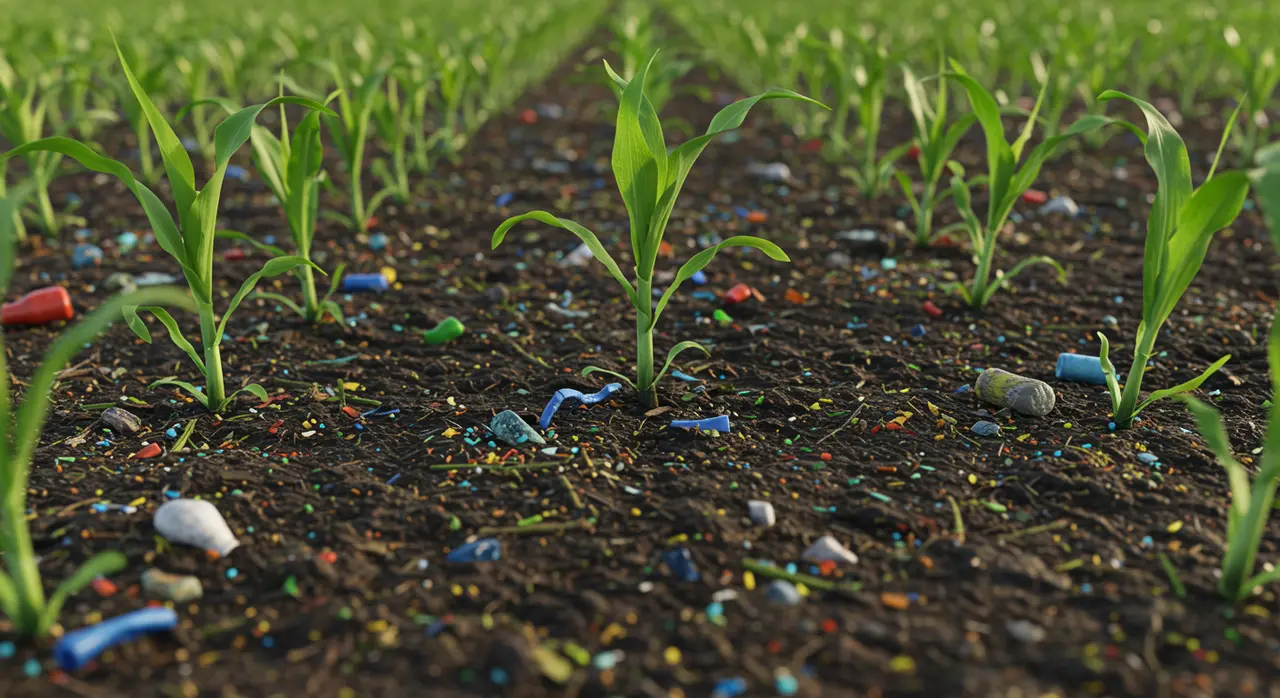Microplastics Found in Human Brains, Food, and Soil: A Growing Global Health Crisis
223 views
Microplastics, those insidious particles measuring less than five millimeters, have infiltrated nearly every corner of human life, from the soil beneath our feet to the most sacred spaces of human biology. Recent findings highlight their presence in human brains, newborns, placentas, breastmilk, and even the food we consume, raising alarms about their potential to disrupt not only individual health but also the broader environmental equilibrium. With mounting evidence linking these tiny fragments to a litany of health issues—ranging from hormonal imbalances and brain fog to antibiotic resistance—the urgency to confront this growing menace has never been greater.

The Ubiquity of Microplastics: A Threat That Knows No Boundaries
Microplastics have become an unsettling fixture in modern life, seeping into the very fabric of existence through an array of sources. Fertilizers coated with plastic particles, for instance, are not only contaminating agricultural soil but are also infiltrating crops, making their way into the human food chain. This silent invasion has been linked to the rise of antibiotic-resistant bacteria and the formation of stronger biofilms within the human body—defensive barriers that make infections harder to treat and medications less effective. The implications are profound, as these microscopic pollutants are capable of triggering skin diseases, inflammation, digestive disorders, hormonal disruptions, and premature aging. In severe cases, prolonged exposure has been associated with conditions like eczema and irregular menstrual cycles, underscoring the need for immediate action.
The FDA has acknowledged the presence of microplastics and nanoplastics in the food supply, a revelation that has added weight to ongoing research into contamination concerns. While the agency's efforts are commendable, the problem’s scale suggests that regulatory measures alone may not suffice. Microplastics are not merely an environmental issue; they are a public health crisis that demands a multifaceted approach, blending scientific innovation, policy reform, and individual behavioral changes.
A Closer Look at the Health Toll
The health risks posed by microplastics are as varied as they are alarming. Their ability to infiltrate human tissues, including the brain, raises questions about long-term neurological effects, such as cognitive decline and emotional dysregulation. Hormonal imbalances caused by microplastic exposure can affect reproductive health, while digestive issues may stem from the particles disrupting gut flora or causing inflammation in the gastrointestinal tract. Skin diseases, including rashes and eczema, are increasingly linked to prolonged contact with microplastics, which can act as irritants or carriers for toxic substances. Even seemingly unrelated conditions like premature aging may find their roots in the oxidative stress triggered by these particles.
The environmental dimension of this crisis cannot be overlooked. Microplastics in fertilizers are not only harming human health but also degrading the soil's natural fertility, threatening agricultural productivity and food security. As these particles accumulate in ecosystems, they disrupt the delicate balance that sustains life, affecting everything from water quality to marine biodiversity.
Practical Steps Toward Mitigation
While the scale of the problem may seem overwhelming, experts have outlined practical measures to minimize exposure to microplastics. Avoiding the use of plastic containers for microwaving food is a simple yet effective step, as heat can cause plastic to leach harmful chemicals into meals. Switching to reusable steel bottles for drinking water eliminates the risk posed by single-use plastic bottles, which often shed microplastics into their contents. Reducing red meat consumption can also help, given that livestock raised on contaminated feed may serve as another vector for microplastic ingestion. Finally, adopting an organic diet not only reduces exposure to pesticides but also minimizes the intake of microplastics often found in processed foods.
These individual actions, while impactful, must be complemented by systemic changes. Governments and industries need to invest in sustainable alternatives to plastic, enforce stricter regulations on waste management, and accelerate research into biodegradable materials. Public awareness campaigns can play a crucial role in educating people about the dangers of microplastics and the steps they can take to protect themselves and their families.
Confronting a Global Challenge
The microplastic crisis is a stark reminder of the interconnectedness of human health and environmental sustainability. It challenges us to rethink our reliance on plastic and to consider the long-term consequences of convenience-driven choices. As scientists continue to unravel the complexities of microplastic contamination, their findings serve as both a warning and a call to action.
In the end, the battle against microplastics is not just about safeguarding individual health; it is about preserving the integrity of the planet for future generations. The choices we make today—whether it is opting for reusable bottles or supporting policies that curb plastic pollution—will determine the world we leave behind. The question is not whether we can afford to act, but whether we can afford not to.
